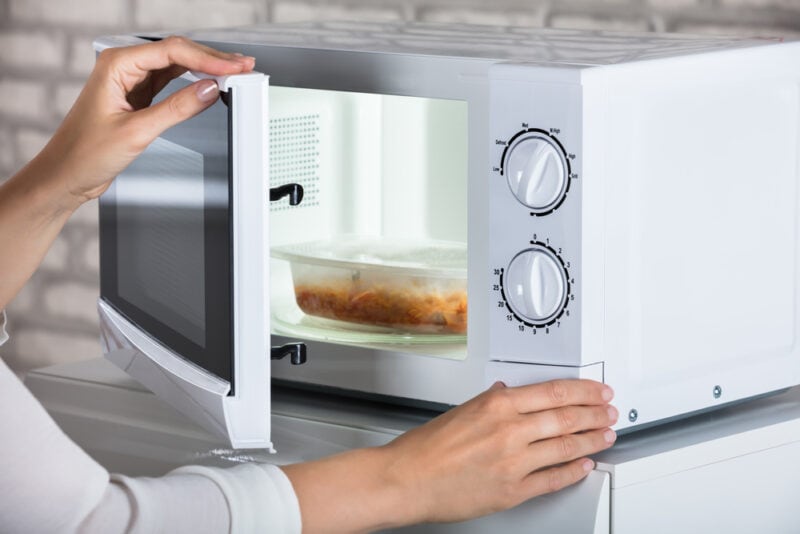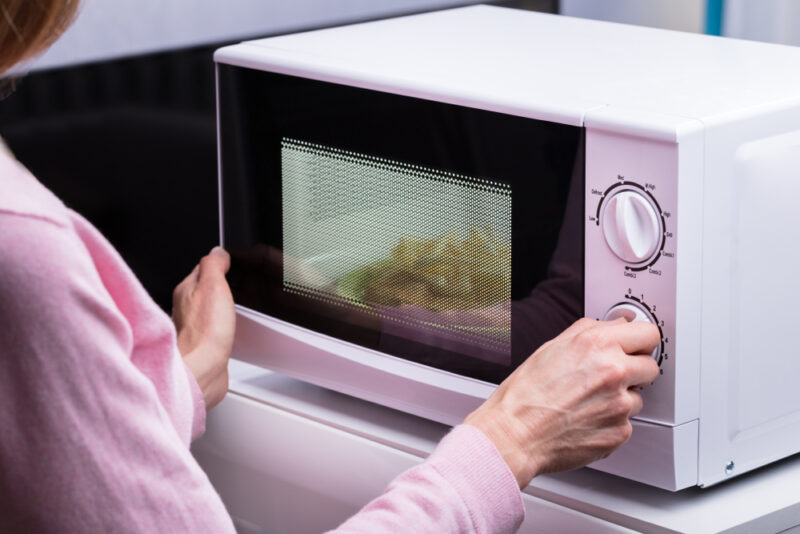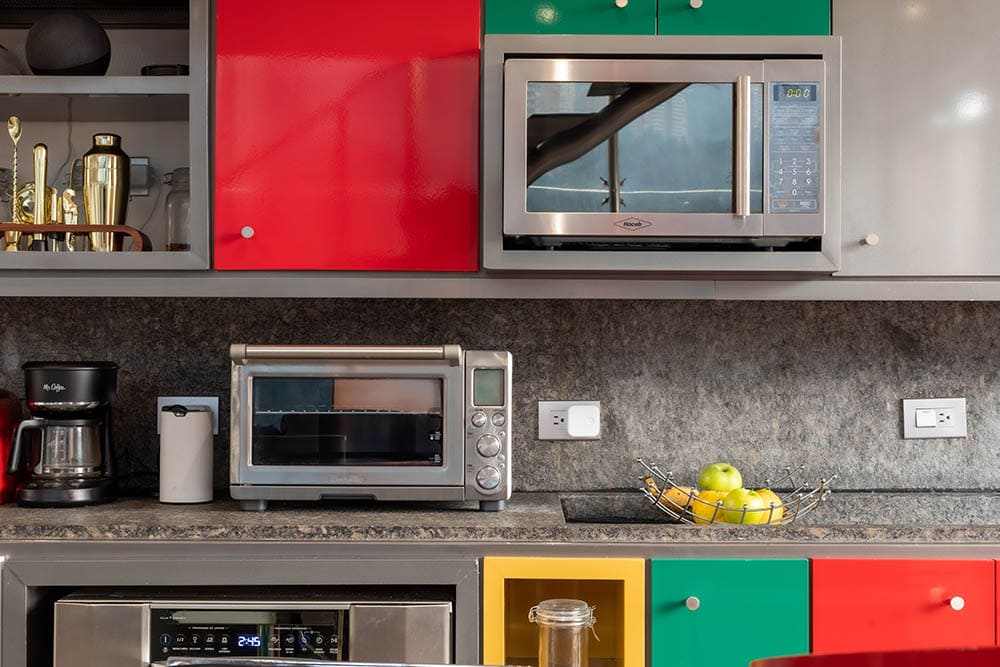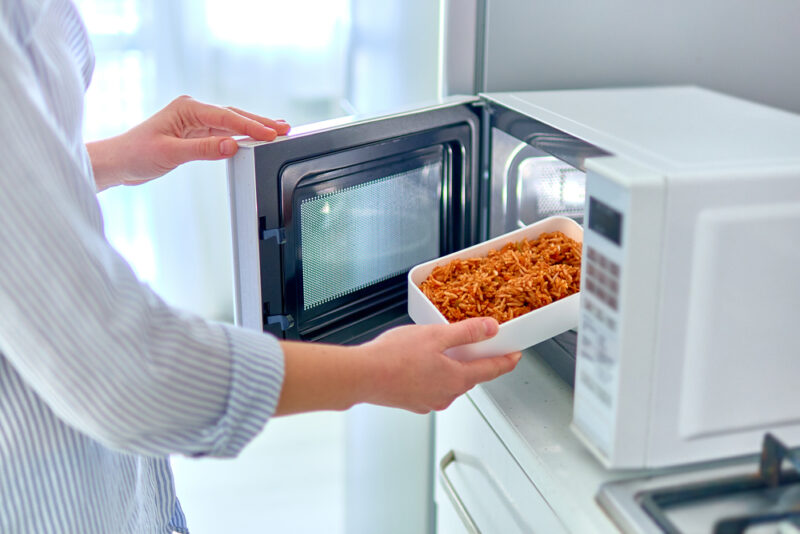Who Invented the Microwave Oven? History, Safety, & Advantages
-
Pete Ortiz
- Last updated:

According to the United States Bureau of Labor Statistics¹, about 90% of American households have a microwave.
While this kitchen appliance is beloved for its convenience, most people may not know that it was invented decades ago and in some very interesting circumstances.
So, who invented the microwave oven and when? This appliance was invented by an American engineer called Percy Spencer in 1945. Read on to learn more about the invention of this one-of-a-kind kitchen appliance and its evolution over the years.
1945: The First-Ever Microwave Oven Is Invented

The first-ever microwave oven was invented by an American self-taught engineer Percy Spencer in 1945. What’s interesting is that it was invented accidentally.
Percy Spencer, an employee of a defense company called Raytheon, was testing out a new vacuum tube called the magnetron when he accidentally invented the microwave.
This magnetron was invented by a British physicist, Sir John Turton Randall. It was later given to the United States government in 1940 in exchange for industrial and financial aid during the Second World War.
Raytheon, the company Percy Spencer worked for, was one of the few that got a contract from the US government to test out and build more of these magnetrons. In 1945, while testing out this magnetron, Mr. Spencer noticed that the chocolate nut bar in his pocket had melted.
Intrigued by this phenomenon, he placed an egg near the magnetron, which exploded. He then placed some popcorn kernels near it, and they popped into popcorn.
Realizing that the low-density energy from the magnetron could actually cook food much faster, Mr. Spencer created a metal box with an opening through which he could pass the microwave energy into it. Once the energy was fed into the enclosed metal box, it created a high-density magnetic field, generating heat that could cook food inside the box.
Once Spencer confirmed that his invention worked, he filed for a patent for the appliance in October 1945.
1946–1947: The First-Ever Commercial Use of the Microwave Oven

In 1946, one of the first microwave oven prototypes was set up in a Boston restaurant for testing. This appliance was first used publicly in 1947 in a Speedy Weeny vending machine in Grand Central, which sold hot dogs.
Later that year, the first-ever commercially available microwave oven was made by Raytheon. This microwave, named Radarange 1161 by the company, was about 1.8 meters high, weighed about 750 pounds, and cost $5,000, which is about $52,000 today. It had to be connected to a water line since the magnetron was water-cooled.
1954–1955: The Second Microwave Oven Model Is Made

The second microwave oven model was made in 1954. This model had several upgrades compared to the first generation. For instance, it consumed half the power its predecessor did. However, it still was quite big and expensive, costing about $2,000–$3,000.
1967: The First-Ever Countertop Microwave Oven Is Made

In 1967, the first-ever countertop microwave was made by a company called Amana Corporation, a subsidiary of Raytheon Corporation. This reduction in size and price increased this appliance’s popularity, especially in households.
Microwave Oven and Its Advantages
Right from the beginning, microwaves presented one major benefit; convenience. This appliance enables one to reheat food in a matter of minutes, thanks to the radio waves from the magnetron that heat the food evenly.
Nowadays, most microwaves have various heat settings. So, you can simply set the appropriate heating or cooking period for your food and let it cook on its own in the appliance.
Microwaves also have a lower energy consumption rate than conventional ovens, which is also a major advantage.
Microwave Oven and Nutrition
This is quite a controversial topic when it comes to microwaves. So, does a microwave oven affect the nutritional value of food? Well, not really. For starters, any form of cooking, from boiling to frying and so on, affects the nutritional value of food.
However, factors such as the cooking duration determine how much nutrients are broken down in the food. So, when it comes to microwaving, the reduction of nutritional value in the food is low since microwaves cook food faster.

Microwave and Safety
One of the main concerns about microwave usage is its radiation emission. However, there’s nothing to worry about since microwaves are designed to contain the electromagnetic radiation they produce within the appliances.
What’s more, exposure to radiation decreases with distance. So, as long as you’re not too close (about 12 inches or less) to your microwave when it’s on, you have nothing to worry about.
Another major safety concern when it comes to microwaves is fire incidents. Similar to other cooking appliances like a conventional oven and cooker, a microwave can catch fire due to various reasons.
The most common reason is food overheating. A microwave catching fire is mainly caused by one overestimating their food’s cooking time, leading to it overheating and blowing up.
A food item’s packaging may also get stuck near the microwave oven’s wave emitter, causing the food to blow up. When it comes to food-based fires in microwaves, most of these appliances are designed to contain fires caused by foods blowing up. All you have to do is turn your microwave off and leave its door closed.
Another safety concern is using plastic containers for cooking or heating food in microwaves. Using a plastic container to heat food in a microwave has been tied to several health issues.
Typically, many plastics contain compounds that are harmful to your health. A good example is bisphenol-A (BPA)¹, a compound in plastic that can cause health conditions such as cancer. And when you use a plastic container to heat your food, this and many other harmful compounds may leak into your food.
So, it’s advisable not to use plastic containers to cook food in microwaves unless it is labeled as “microwave safe.”
- You might also like: Is CorningWare Microwave Safe? (Microwave Safety Tips)
Final Thoughts
Like any other kitchen appliance, microwaves are bound to have many technological upgrades in the future. And many companies are leading from the front.
For instance, Wayv recently introduced portable microwaves, allowing individuals to heat their food items anywhere. Not to be left behind is Samsung, which has already introduced a multi-purpose microwave oven that can not only heat food but can also fry and bake.
Clearly, the evolution of the microwave will not stop soon.
Related Read:
- How Hot Does a Microwave Get? (Microwave Safety Tips)
- What Is a Convection Microwave? How Do They Work?
Featured Image By: Andrey_Popov, Shutterstock
Contents



